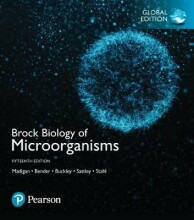Microbial Ecosystems - Major marine phototrophs
10 important questions on Microbial Ecosystems - Major marine phototrophs
How does Ostreococcus differ from Prochlorococcus? What do they have in common?
- Differences: Ostreococcus and Prochlorococcus differ in their genomic characteristics. Ostreococcus has a larger genome (12.6 Mbp) compared to Prochlorococcus, which has a smaller genome size (around 2 Mbp). The Ostreococcus genome is gene-dense, containing about 8000 genes, whereas Prochlorococcus has approximately 2000 genes. Ostreococcus is a eukaryotic organism, while Prochlorococcus is a cyanobacterial prokaryote.
- Commonalities: Both Ostreococcus and Prochlorococcus are oxygenic phototrophs, meaning they perform photosynthesis to produce oxygen. Despite their differences in genome size and structure, they share the common feature of being major marine phototrophs, contributing to primary productivity in marine ecosystems.
How does the organism Prochlorococcus contribute to both the carbon and oxygen cycles in the oceans?
How does Roseobacter differ from Prochlorococcus?
- Taxonomy: Roseobacter and Prochlorococcus belong to different taxonomic groups. Roseobacter is a genus of Alphaproteobacteria, while Prochlorococcus is a cyanobacterial genus.
- Metabolism: Roseobacter is an aerobic anoxygenic phototroph, meaning it carries out photosynthetic light reactions only under oxic (oxygenated) conditions. In contrast, Prochlorococcus is an oxygenic phototroph, performing photosynthesis under both oxic and anoxic conditions.
- Carbon Source: Roseobacter relies on organic carbon for its carbon sources, exhibiting photoheterotrophy. On the other hand, Prochlorococcus is primarily autotrophic, using inorganic carbon sources for carbon fixation during photosynthesis.
- Higher grades + faster learning
- Never study anything twice
- 100% sure, 100% understanding
What distinguishes Prochlorococcus from most cyanobacteria in terms of pigments, and how does this distinction impact its appearance?
What role does Prochlorococcus play in the primary productivity of the tropical and subtropical regions of the world's oceans?
Describe the concept of Prochlorococcus ecotypes and provide an example of an ecological difference between different ecotypes.
How does genetic diversity within Prochlorococcus populations contribute to its adaptive response to changing environmental conditions?
What distinguishes Trichodesmium from Prochlorococcus, and what role does Trichodesmium play in the marine nitrogen cycle?
Compare the genome characteristics of Ostreococcus and Prochlorococcus, highlighting their differences in genome size, gene density, and number of genes.
Explain the concept of aerobic anoxygenic phototrophs and provide examples of bacteria belonging to this group. How do they synthesize ATP in illuminated and oxic pelagic waters?
The question on the page originate from the summary of the following study material:
- A unique study and practice tool
- Never study anything twice again
- Get the grades you hope for
- 100% sure, 100% understanding
































